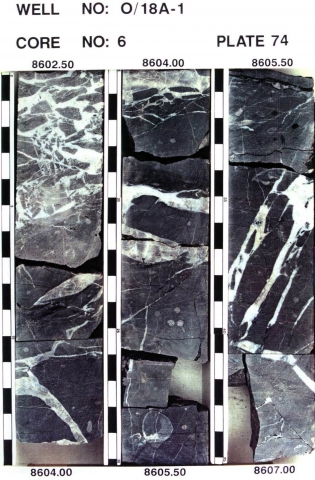Code
CLZLB
Status
Formal (Van Adrichem Boogaert & Kouwe 1994).
Lithological description
Sequence of medium-grey or brown grey to dark-brown or brown-black, coarse-crystalline dolomites, often containing black organic intergrain residues. Dolomites are generally of secondary origin. In places minor grey to dark-grey limestones occur, as well as minor quantities of dark-brown to blackish siltstone and claystone. In addition, beds of dark silicified dolomite are occasionally present.
Depositional setting
Not yet determined.
Definition of lower boundary
Not yet determined.
Definition of upper boundary
Clearly diachronous.
Thickness indication
Up to 383 m.
Geographical distribution
Regional correlation
UK: Zeeland Formation; GER: Kohlenkalk Group; BEL: Vesdre Formation.
Age
Tournaisian - early Visean.
Holostratotype
Well:
Depth (thickness) AH:
2604 - 2836 m (232 m)
Parastratotype
Depth (thickness) AH:
338 - 382 m (44 m)
Origin of name
Named after the island of Noord-Beveland in the province of Zeeland.
Previous name(s)
None.
Reviewed by (date)
Tom van Hoof (2017).
References
Van Adrichem Boogaert, H.A. & Kouwe, W.F.P. 1994. Stratigraphic nomenclature of The Netherlands; revision and update by RGD and NOGEPA, Section B, Devonian and Dinantian. Mededelingen Rijks Geologische Dienst, 50, 1-20.
Cite as
TNO-GDN ([YEAR]). Beveland Member. In: Stratigraphic Nomenclature of the Netherlands, TNO – Geological Survey of the Netherlands. Accessed on [DATE] from https://www.dinoloket.nl/en/stratigraphic-nomenclature/beveland-member.
